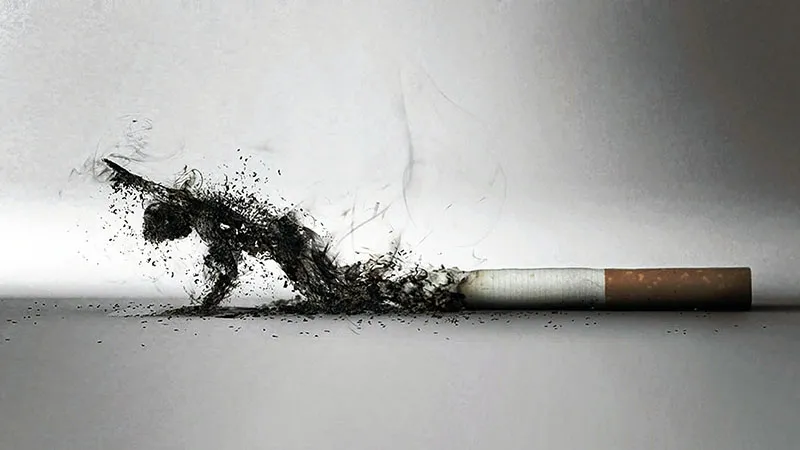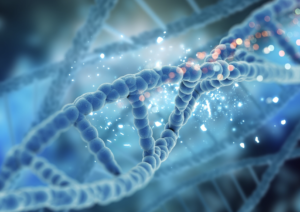The Influence of Nicotine on the Human Body during Rehabilitation

Smoking and the use of other forms of tobacco containing nicotine remain one of the major risk factors for public health. Its impact on the body during the rehabilitation period is a complex and multifaceted issue that requires careful consideration.
What is the importance of the rehabilitation period?
The rehabilitation period is the time when the human body is recovering from an illness, injury or surgery. It includes efforts to restore the patient’s physical, psychological and social condition. The rehabilitation process requires careful management of many factors, including quitting tobacco use.
Nicotine and its distribution

Nicotine is the main active ingredient in tobacco, which stimulates the release of neurotransmitters in the brain, causing feelings of euphoria and pleasure. It enters the bloodstream when smoked and can be highly addictive. According to the World Health Organization (WHO), more than 1.3 billion people worldwide smoke tobacco. Smoking is common across all age groups and socioeconomic strata. Adult men are more likely to smoke than women, but the percentage of women who smoke is increasing. This smoking pandemic is having a significant impact on public health and the economy of many countries.
Physiological effects of nicotine
This toxin quickly penetrates organs and tissues through the blood, causing a number of physiological reactions. It stimulates the release of adrenaline, increasing heart rate and blood pressure. Nicotine also causes narrowing of blood vessels, which can lead to various diseases.
The effect of nicotine on the nervous system and brain
This toxin affects the nervous system, causing an increase in dopamine levels in the brain, which promotes feelings of pleasure and reward. This makes nicotine a highly addictive substance. In the long term, this substance can cause a variety of nervous disorders, including depression, anxiety, and sleep disorders.
Detection of nicotine on the heart, lungs, stomach

Using nicotine through cigarettes or other methods is associated with the risk of developing lung cancer, asthma, chronic obstructive pulmonary disease (COPD), and coronary heart disease. In addition to harming the lungs and heart, this alkaloid can also cause stomach diseases such as ulcers and stomach cancer.
The role of nicotine in the rehabilitation period

Nicotine plays a significant role in the rehabilitation period, and, unfortunately, this role is usually negative. It can significantly slow down the body’s recovery process and worsen the general condition of the patient. This toxin affects blood circulation, constricts blood vessels and limits the delivery of oxygen and nutrients to damaged tissues and organs. In addition, nicotine can increase the manifestation of stress and anxiety during the rehabilitation period, which also does not contribute to successful recovery. At the same time, this stimulant, causing a state of euphoria and pleasure, can create the illusion of relief of negative symptoms, which determines its attractiveness for patients in rehabilitation. However, such “relief” is short-lived and does not solve the main problems, but on the contrary, complicates the process of solving them, aggravates the patient’s condition and leads to increased dependence on this stimulant.
The Effect of Nicotine on Wound and Tissue Healing
Nicotine has significant negative effects on wound healing and tissue repair. One of the key issues is its ability to constrict blood vessels, which reduces blood flow to the wound area. This limits the delivery of oxygen, nutrients, and immune cells that are needed for wound healing and tissue repair. In addition, nicotine can negatively affect the process of regeneration of collagen, the main protein that provides strength and elasticity to the skin. A weakening of this process can lead to the formation of weaker, less elastic tissues and a slower overall wound healing process. As a result, wounds may take longer to heal and there is an increased risk of complications such as infection and necrosis.
Rehabilitation and nicotine

Nicotine can significantly complicate the process of recovery of the body after an illness. Its main effect is manifested in the deterioration of blood circulation and weakening of the immune system, which slows down recovery and increases the likelihood of complications. This substance promotes the narrowing of blood vessels and reduces the supply of oxygen and nutrients to organs and tissues, which negatively affects their regeneration. In addition, the alkaloid affects the functions of the immune system, reducing its ability to cope with infections and damage. Nicotine use can also slow down the process of restoring the functions of organs damaged as a result of the disease. For example, smokers take longer to restore lung function after pneumonia or other respiratory diseases. Thus, during the period of rehabilitation and recovery from an illness, it is important to quit smoking for a successful and quick recovery.
Risks and complications
Using nicotine during recovery can increase the risk of relapse and poor health. It can also cause a number of complications, including cancer, cardiovascular disease, and chronic lung disease.
Negative effects of nicotine use
Using nicotine during the rehabilitation period can significantly slow down the body’s recovery process and worsen the patient’s general condition. The substance constricts blood vessels, worsening overall blood circulation and limiting the delivery of oxygen and nutrients to wounds and damaged tissues. It can also negatively affect the immune system, increasing the risk of infectious complications.
Potential risks during rehabilitation
Continuing to use nicotine during recovery not only slows down the recovery process, but also increases the risk of relapse. Patients may feel the need to use nicotine to relieve stress or pain, leading to increased dependence. Long-term nicotine use is also associated with a number of diseases, including cancer, cardiovascular disease, and chronic respiratory disease.
Recommendations for managing nicotine addiction

During the rehabilitation period, it is recommended to stop using nicotine. In some cases, doctors may recommend substance replacement therapy or other methods of treating nicotine addiction.
How to Quit Nicotine
Quitting nicotine during rehab is a necessary step for successful recovery. Quitting can be difficult, especially for people with long-term addiction. A comprehensive approach is needed that includes psychological support, educational programs, and, in some cases, medication therapy. It is important to remember that quitting this toxin is a process, and every step forward, no matter how small, is a success.
Therapy for nicotine addiction
Nicotine replacement therapy (NRT) can be an effective strategy for overcoming nicotine addiction during rehab. NRT offers a low dose of the stimulant without tobacco smoke, which helps reduce withdrawal symptoms. Additionally, there are medications that can help manage the urge to smoke. Support groups and cognitive behavioral therapy can also be helpful in combating nicotine addiction.
Conclusion

The impact of nicotine on the body during recovery is significant. This reinforces the importance of quitting smoking and using supportive measures to cope with addiction. Making smart decisions about nicotine addiction during this period can improve recovery outcomes and promote long-term health.
Results of the influence of nicotine on the body during the rehabilitation period
During rehabilitation, nicotine use can significantly impact the recovery process and overall health of the patient. The substance impairs blood circulation, slows down the healing process of wounds, increases the risk of infections, and can negatively affect the functioning of the heart, lungs, and other organs. In addition, nicotine use during rehabilitation increases the risk of relapse and deterioration of overall health. This threatens not only the success of rehabilitation, but also the long-term health of the patient. Making a smart decision to quit nicotine during rehabilitation is the key to successful recovery. This includes understanding the effects of the psychoactive substance on the body, using available resources and therapies to overcome nicotine addiction, and actively participating in the rehabilitation process. Making smart decisions also means taking care of your physical and mental health, including maintaining a healthy lifestyle, nutrition, and regular exercise. Ultimately, quitting nicotine during rehabilitation can significantly improve a patient’s quality of life and reduce the risk of future illnesses.




